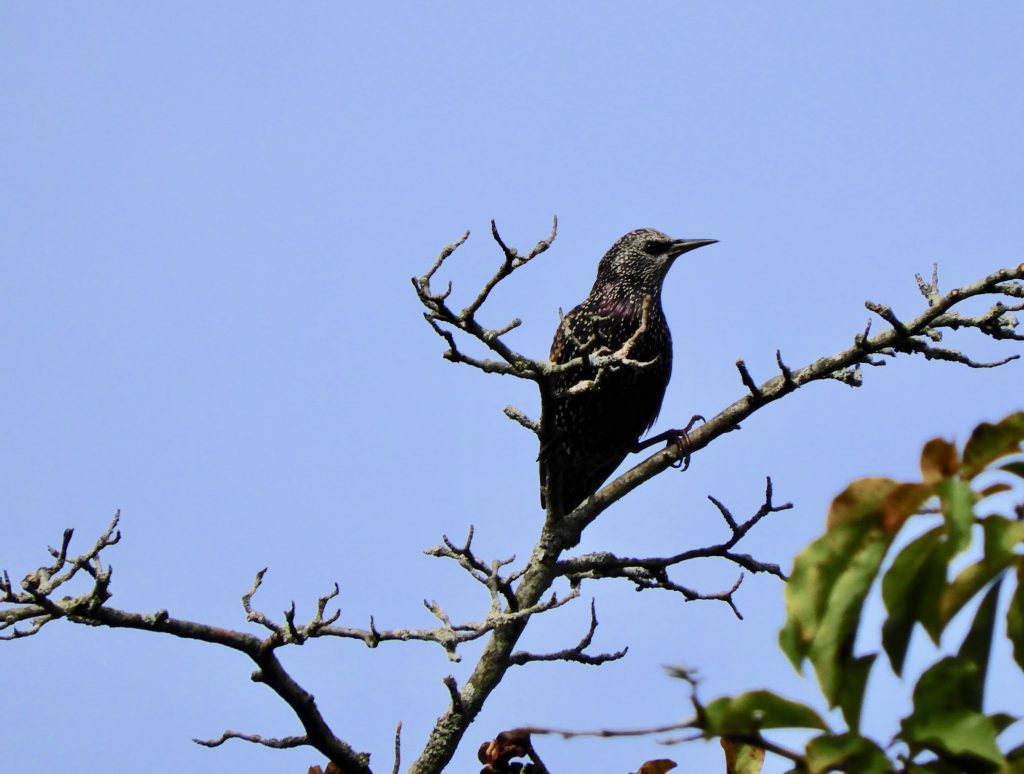October 27 2019. Royal Botanical Gardens Arboretum, Hamilton, ON. Very few people were about this morning and there was a light drizzle in the air as I started on today’s transect. This was the last of a very wet and blustery system that had swept across the eastern half of the continent overnight. Such stormy conditions obviously force birds to seek shelter and after perhaps forty-five minutes, and half way around the route, I’d noted only sixteen individual birds in four species. I wondered if I was setting an all-time record for fewest birds seen. But, as the theme of this site notes, there’s always something, some bird, that turns the dreariest of birding experiences into something special. Today it was European Starlings, my Birds of the Day.
The return leg of the transect route leads uphill and briefly through a stretch of thick deciduous forest. As I entered the forest I could hear bird song, I thought perhaps a number of American Robins were singing softly, as if in rehearsal as they sometimes do at this time of year. But the song came instead from starlings, hundreds of them gathered in the bare treetops. That they were up so high was, in itself, surprising because the west wind was a steady, punishing Force 6. (Beaufort Scale. 6: Large branches in motion; whistling heard in telegraph wires; umbrellas used with difficulty.)
As I watched enjoying the sound and spectacle, the birds ceased as if commanded and took flight in a large swirling flock and returned moments later to the same tree tops to continue their song, they were impossible to count but I estimated them at perhaps 1,000 strong. I continued up hill and at the top turned to better appreciate the extent of the flock. They were on all treetops around me and on the open grass of the arboretum, socialising, whistling and chattering. I doubled my estimate. Time and again they’d pause the chatter and then, as one, take to the air in large swirling masses, parting and recombining liquidly as if on a multi-dimensional roller coaster.
Doubtless it is this flocking behaviour that has earned them the collective noun, a ‘murmuration of starlings’. The whistling, chattering, and warbling song of a thousand birds is indeed is a melodic murmur, but when, on an instant, it stops and they take off, the low overhead flight of thousands makes a blanketing whoosh.

They may not be the most beautiful or engaging birds, they no doubt have their supporters but that’s a topic for another day. Here is a photo of one showing a violet sheen that just underscores that there’s more to a starling than plain black drab.